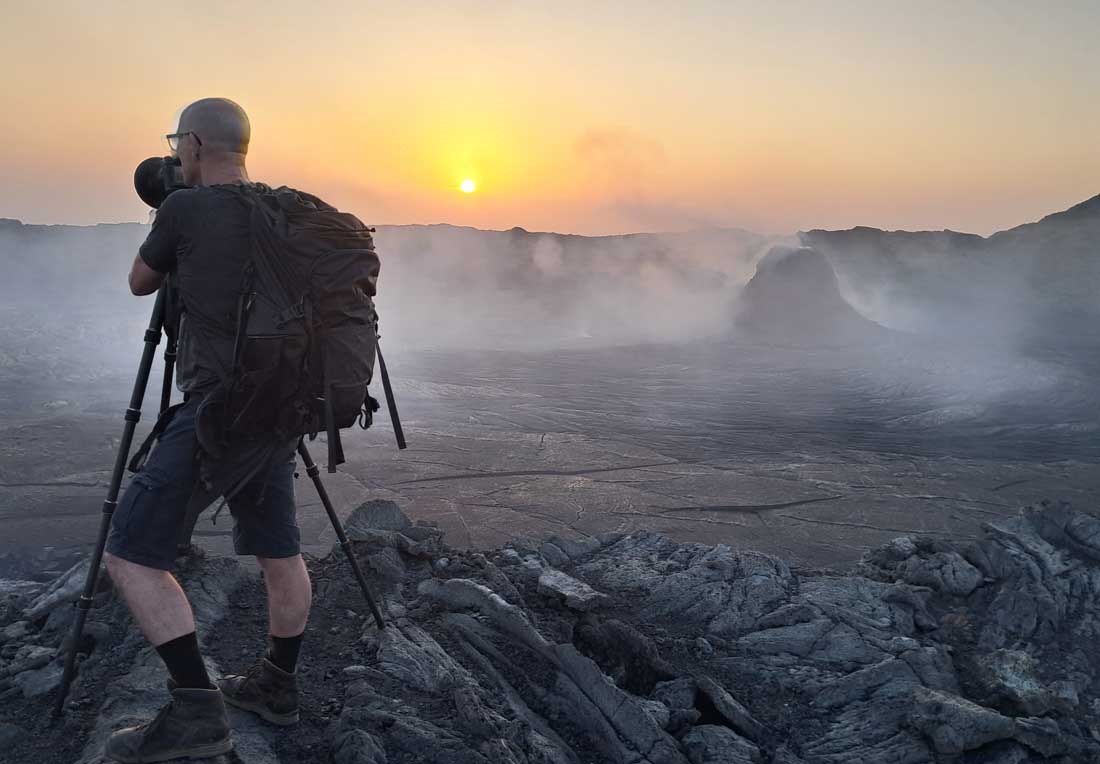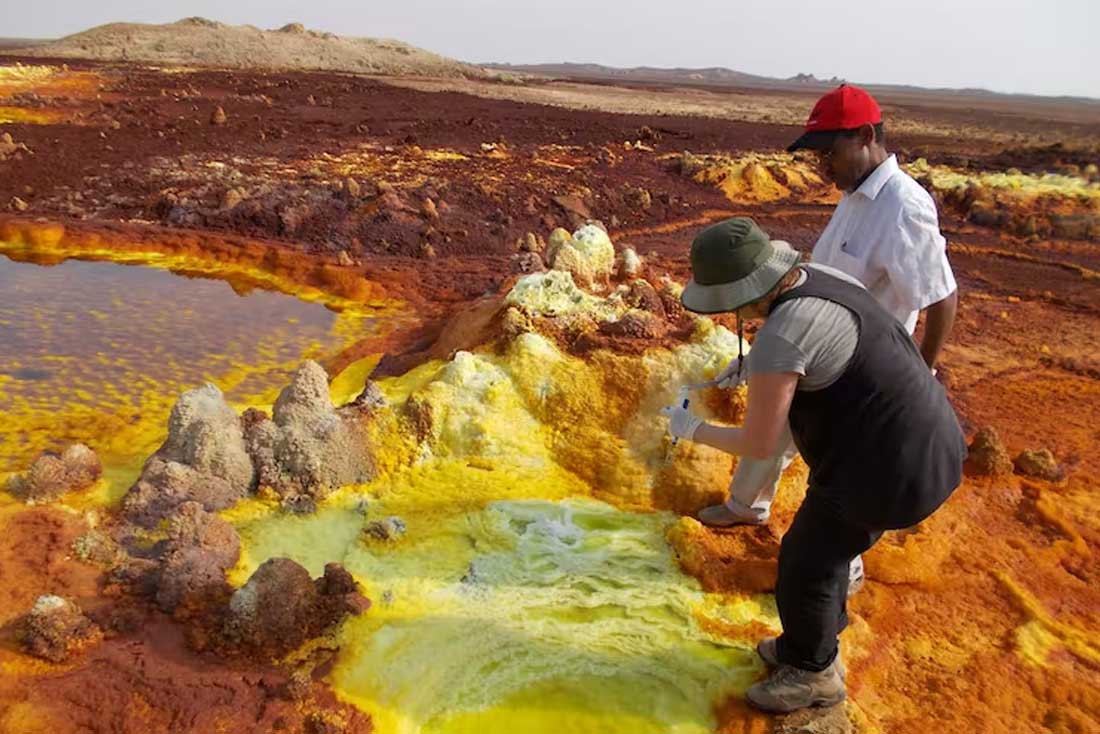15 Days Combined Tours
Day 1:
Arrive to Addis Ababa- City tour
Welcome to Ethiopia! Upon arrival at Addis Ababa Bole International Airport, you will be welcomed and assisted by your tour guide and driver for the transfer to Hotel After breakfast we have a full-day city tour, which departs at 9:00am from the hotel. Addis Ababa is the third highest capital city in the world. Located at 2,500 metres above sea level in one of the highest parts of the Entoto mountain chain. We take time to explore the city. We will visit the National Museum (home of the remains of the famous hominid fossil, “Lucy”) and the Ethnological Museum at the Addis Ababa University (housed in the former palace of Emperor Haile Selassie). We will also witness the bustle of the one of the colourful local markets, which has an array of fascinating goods and curios, providing a great place for exploration and people watching.

Day 2:
Fly to Lalibela
Early morning transfer to Bole international airport. You’ll be picked up at Lalibela airport and transferred to your hotel. The short flight to Lalibela transects amazing rust colored canyons and high jagged peaks. At over 8,500 feet the small town of Lalibela is situated high in the Lasta Mountains. Even though Lalibela has been a destination for travelers and pilgrims since the 16th century, the town is remarkably undeveloped. The day is spent exploring the ancient city and its many rock-hewn churches. Lalibela is arguably one of the most important religious and historical sites in Africa, and certainly in the entire Christian world. Although it is not widely known in the west, Ethiopia was the first country to adopt Christianity as a state religion and, due to Ethiopia’s becoming Christian long before the Catholic church was born or instigated the structure we recognize today, the roots of Ethiopian Orthodox religious practices are as recognizably Jewish as they are Christian. The Lalibela churches are said to have been constructed during King Lalibela’s reign in the 12th and 13th centuries when Lalibela (then known as Roha) was the capital of the Zagwe dynasty. Legend has it that King Lalibela was exiled in Jerusalem and returned to Ethiopia to build a New Jerusalem. There are many theories as to how these architecturally very advanced churches were built. In the evening we go to the church to see the eve of Christmas .

Day 3:
Lalibela - Genna - Ethiopian Christmas —January 7
The celebration of Ethiopian Christmas is more unique in the rural area than in the cities especially in Lalibela where it is celebrated colorfully by the priests and the followers. In most rural areas, it is celebrated by various activities like horse race by local people and folk dances of authentic type. A match which looks like European Hockey but typically Ethiopian is conducted between youth teams of two. The game is named after the festival and is called “Yegena–Chewata”.

Day 4:
Fly to Gondar
Today at 9:30 you will transfer to airport. Once you have landed in , you will be picked up at Gondar Airport and transferred to your hotel.
Gondar was the first capital city of the Ethiopian empire, which began in 1632 with the reign of Fasilidas. In the city, there are a dozen castles built by various emperors over the course of 236 years. The city seems more European than African and also has Islamic influences. In the afternoon, we visit the palaces, residences and baths of Fasilidas; afterwards, we visit the church of Debre Berhan Selassie (Light of the Trinity), which is located at the summit of a hill and surrounded by fortified walls. The interior is decorated with beautiful fresco

Day 5:
Gondar - Semien Mountain -Gondar
Early morning drive up into Africa’s most beautiful highlands, the Simien Mountains. The drive takes about 4 hours on packed gravel roads amidst stunning scenery.
The Simien Mountains not only offer amazing vistas and panoramic views, but the area is also critical habitat of several of Ethiopia’s endemic species: the walia ibex, the gelada baboon, and the rare Ethiopian wolf. Other resident mammals include rock hyraxes, jackals, bushbuck and klipspringers. Ras Dashen, the fourth highest peak in Africa, rises to 4,620 meters amongst several other impressive peaks. Drive back to Gondar late afternoon.

Day 6:
Drive to Bahir Dar
Depart this morning for the three hour drive to Bahirdar, passing rural villages over mountain passes with stunning vistas to get your first glimpse of the impressive lake Tana monasteries. After we check in hotel and freshen up explore Lakr Tana . will make boat cruise over Lake Tana to visit the ancient 14th century island monasteries of Lake Tana. The 37 islands of Lake Tana shelter twenty monasteries-surviving remnants of an old, contemplative tradition. Because of their isolation, they were used to store treasures and religious relics from all parts of the country. The Lake’s monasteries are famous for their typical Ethiopian religious paintings, illuminated manuscripts, and other ancient church treasures. The monasteries that we are going to visit include Kibran Gebriel, Ura Kidane Mihret and Azua Mariam.

Day 7:
Fly to Addis Ababa- Awassa
After a morning flight back to Addis Ababa, we begin our six-hour journey, by 4X4 vehicle, through southern Ethiopia to the Rift Valley Lakes region. As we skirt the shores of lakes Shala, Abiata, and Langano, we’ll take in extraordinary views while spotting aquatic birds and other wildlife. Our destination is a beautiful resort on Lake Awasa.

Day 8:
Drive to Arbaminch
Morning visits the fish market which is very active during this time of the day and we drive to Arbaminch via Dorze . we pass through Chencha village to visit Dorze people. Among their very interesting cultures are their houses built from bamboo way of life and cultivation of the false banana (from which they extract their local bread, called Kotcho

Day 9:
Arbaminch
Morning visit the Netch Sar Park with spectacular views over the lakes and different mammals, as the endemic Swaynes Hartebeest, Zebras, lesser Kudu, and others. Back lunch Arbaminch. Afternoon make a boat trip on Chamo. Admire crocodiles and hippos (here crocodiles are some of the longest in Africa, with length of 6 and also above meters).In the morning we visit the Nech-Sar Park. Nech-Sar located between lakes Chamo and Abaya, where one can see gazelles and zebras. Then we proceed to returning northwards the rift valley lakes. The Rift Valley is a deep fission that extends for over 6,000 km from the Middle East to Mozambique — testimony to the (most recent) violent and massive shifting of the earth’s tectonic plates. The rift contains a marvelous series of lakes, which are teeming with fish and provide a habitat for hundreds of species of birds,

Day 10:
Drive to Jinka
Drive to Jinka, Admiring on the way the interesting Konso, Derashe, Ari, Benna and Tsemay People, very famous for hairstyles, their unique culture and traditions, as the ornaments all over their body. Konso people famous for their terracing agricultural works ad villages’

Day 11:
Jinka
Mago-Mago National Park of is located on the east bank of the river Omo and ranges in altitude from 450 to 2,528 meters above sea level. After about 2 hours of rough road, we arrive to the camp where we spend the night in a tent. The campsite is in a beautiful clearing among towering trees, which provide shade, and near the river Neri. We visit the Mursi village, whose women have the custom of expanding their lower lips using disks that gradually get larger and larger. These are people who farm the land and breed livestock; they live in almost complete isolation from the rest of the world.
We return to the camp; there are not many animals visible during the day in the park, but by night we are surrounded by thousands of sounds, among which is the trumpeting of elephants. Overnight and dinner is in a camp.

Day 12:
Drive to Turmi
Today we visit a colourful local market and mingle with different tribes like the Karo, Hamer and Benna. There are many interesting handicrafts to be found too – don’t forget to bargain. Hopefully we will also be invited into a couple of homes.
Dimeka is the principal town in Hamer country, with an impressive market on Saturdays, where Hamer villagers make their way to from miles around. Dimeka borders different tribal areas, and you’re likely to encounter several different tribes mingling together in the market. A visit to one of the villages in the area is also rewarding; made entirely of mud, the small thatched huts are tidily arranged with very few outside influences to be seen, offering a glimpse into another way of life. Covering a large territory, the Dassanech people who live along the western banks of the Omo River, having been forced out of the Turkana region by conflict in the 18th century. Originally nomadic pastoralists, the more fertile surroundings of the Omo River has caused them to put down more permanent roots based around fishing and agriculture. The Daasanach live in small huts that befit their nomadic origins, as they could be easily and quickly dismantled
Today we visit the Daasanach cultural before returning in the afternoon to Turmi and spend the night campingCovering a large territory, the Dassanech people who live along the western banks of the Omo River, having been forced out of the Turkana region by conflict in the 18th century. Originally nomadic pastoralists, the more fertile surroundings of the Omo River has caused them to put down more permanent roots based around fishing and agriculture. The Daasanach live in small huts that befit their nomadic origins, as they could be easily and quickly dismantled.
. Today we visit the Daasanach cultural before returning in the afternoon to Turmi to spend the night continue through the savannah along tracks that are barely visible, passing through a vast meadowland with shrubs and umbellifers (‘umbrella’acacia trees). We pass through the village of Omorate on the Omo River. We encounter the Galeb people in the street; in the river people bathe and wash their clothes. We arrive to Turmi and camp in a square under mango trees. The Hammer people gather water from a nearby well and carry it off to their village.

Day 14:
Return to Arba Minch
We drive to Konso via Woito, The road continues into the savannah, running alongside the mountains of Men, and then rises up the Karkerte Mountains — providing splendid panoramic views — until it reaches the soft, terraced hills of Konso. On the way we visit the interesting Derase, Ari, Benna and Tsemay people, very famous for hairstyles, their unique culture and traditions, as the ornaments all over their body and Konso people famous for their terracing agricultural works and villages’traditions. Proceed driving to Arbaminch along the side of Lake Chamo, we visit Lake Chamo.We have dinner and stay in the the same hotel as previously.

Day 15:
Drive to Addis Ababan to Arba Minch
After an early breakfast, we drive north via Chencha, stopping to visit with the Dorze tribe and arriving back in Addis Ababa in time for dinner.In the evening before departure, you will be invited a farewell dinner party at one of the best traditional restaurants in Addis where you taste variety of Ethiopian meals, and watch the folkloric dancers of the Ethiopian people.

